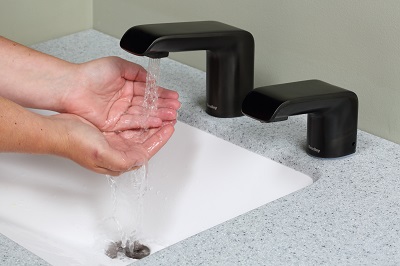5 Ways Handwashing Habits Have Changed Since COVID
While it’s been four years since the COVID-19 pandemic disrupted lives, one behavior has left a lasting impression: handwashing. That’s based on survey findings of more than 1,000 American adults conducted by Bradley Company, a global manufacturer of commercial washroom fixtures.

In 2024, the impacts of the pandemic remain—especially in terms of hand hygiene and public restrooms. Today, 80% of Americans say they are now more conscious of coming into contact with germs in restrooms because of COVID, according to the Healthy Handwashing Survey. Stores, healthcare facilities, and restaurants cause the most concern about encountering germs.
“While there is a lingering sensitivity to germs that cause sickness, the majority of Americans appear to have raised their awareness of the importance of handwashing, and many have stepped up—and continued—their handwashing behavior,” said Jon Dommisse, Bradley’s vice president of business development and strategy.
“For 15 years, our survey has tracked Americans’ attitudes and practices concerning handwashing. As we recognize World Hand Hygiene Day on May 5, we reflect on several ways Americans are prioritizing handwashing.”
1. Practicing Better Hand Hygiene
Starting back in 2009, at the outbreak of the H1N1 swine flu virus, Bradley conducted its first survey. At the time, only 45% of Americans opted to increase their hand hygiene in response to seasonal virus increases.
The early days of the pandemic brought uncertainty about how to avoid contracting coronavirus, causing a significant increase in handwashing behavior. Specifically, in the spring of 2020, 90% of Americans washed their hands more diligently and were sudsing up, on average, 10.5 times a day, compared to six times per day before COVID.
In 2024, handwashing activity has leveled out at, with 74% of American adults washing their hands more frequently (or more thoroughly) in response to seasonal virus outbreaks—a considerable rise from 45% in 2009.
2. Relying on Handwashing to Stay Healthy
According to the survey, 95% of adults believe handwashing is essential to maintaining their overall health—a viewpoint that’s nearly universal across gender, age, and geography. In addition to the physical benefits, there are emotional pluses: 72% say they feel healthier or safer immediately after washing their hands.
“Regular handwashing throughout the day helps remove germs and viruses that can cause sickness,” said medical microbiologist Michael P. McCann, Ph.D., professor and chair of biology, Saint Joseph’s University. “Hand hygiene is a simple and easy thing to do and shouldn’t be overlooked.”
3. Focusing on Handwashing when Traveling
During travel, 77% of Americans make a point to stop in public restrooms in airports or during road trips specifically to wash their hands. In fact, 67% make a point to wash more diligently before a trip to avoid sickness. When they are sick, 54% increase their handwashing activity.
In terms of the public places that cause the most concern about coming into contact with germs, stores (55%), hospitals/healthcare establishments (52%), and restaurants (40%) top the list.
4. Ramping Up Handwashing when out in Public
Americans wash their hands 89% of the time after using a public restroom. “The frequency with which the public wash their hands after using the restroom has always been very high in our survey,” noted Dommisse. “The top reasons for not washing hands in a public bathroom are empty soap or paper towel dispensers or a nonworking or unclean sink.”
Moreover, Americans are critical of others who don’t uphold public standards for washing their hands. Observing someone who doesn’t wash up leaves a negative impression for approximately 70% of respondents. Unfortunately, it’s a frequent occurrence since approximately 70% of total respondents see others leave public restrooms without washing their hands, and men see this more frequently (79% men vs. 59% women). More than 50% of Americans have a negative impression when they encounter someone with dirty or sticky hands.
5. Favoring Touchless Fixtures in Public Restrooms
Americans’ concern about germs in public restrooms is accompanied by a desire to avoid contact with fixtures. In fact, 86% think it’s important that restrooms have touchless fixtures, a preference that has remained high ever since the pandemic.
“Touchless fixtures minimize cross-contamination of germs in restrooms, improve restrooms’ cleanliness and hygiene, and make people feel more comfortable using these spaces,” added Dommisse. “Furthermore, 70% are more likely to return to a business offering no-touch capabilities in its restrooms.”
The top touchless restroom features considered most important are faucets, flushers, soap dispensers, and paper towel dispensers.
For more information, visit bradleycorp.com/handwashing.
The post 5 Ways Handwashing Habits Have Changed Since COVID appeared first on Facilities Management Advisor.

